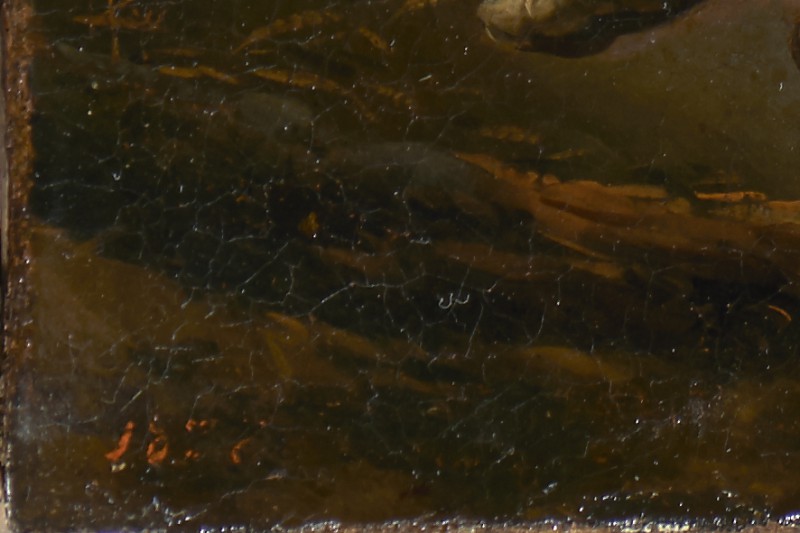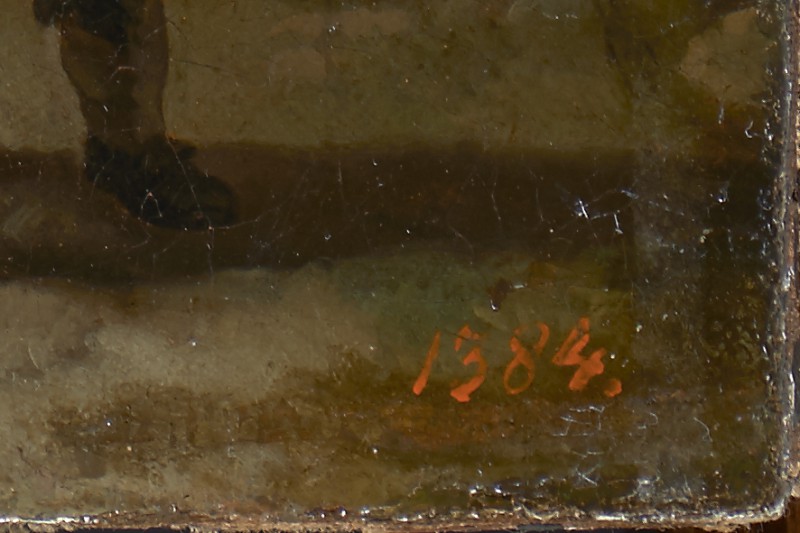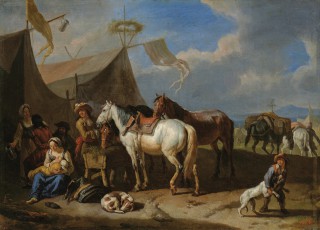Military Camp with a Woman Feeding her Child and a Boy Playing with a Dog
- Date
- c 1700-1710
- Object type
- painting
- Technique
- oil
- Material
- canvas
- Dimensions
- 39,5 x 55,6 cm
- Acquisition date
- 1792
- Location
- The Palace on the Isle - Portrait Room, ground floor
- Marks and inscriptions
- red number 1384 of the Stanisław August collection, bottom right (figures in incorrect order, see below)
- Place of Origin
- Antwerpia (Belgium)
- Owner
- National Museum in Warsaw
- Acquisition name
- deposit; inv. no. M.Ob.1631
- Museum number
- Dep 932
In the Stanisław August catalogues, the painting was believed to be a work ‘in the manner’ of Philips Wouwerman. It was first published as being by Pieter van Bloemen by Dmitry Grigorovich ([D.W. Grigorowicz], Warszawa. Dworiec w Łazienkach. Bielwiedier. Zamok. Opis priedmietam imiejuszczim prieimuszczestwienno chudożestwiennoje znaczenije, S. Pietierburg 1886, p. 61, no. 92); Andrei Samov gave the same attribution (A. Somow, Katałog kartin nachodiaszczichsia w impieratorskom Łazienkowskom Dworce, Warszawa 1895, no. 146), as later did Stanisław Iskierski (S. Iskierski, Katalog galerii obrazów Pałacu w Łazienkach w Warszawie, Warszawa 1931, no. 12). This attribution still holds to date.
The nickname—Stendardo—which Pieter van Bloemen was given by the Schildersbent fraternity which united artists from the north of Europe working in Rome, refers to the motifs and banners and pennants which often appear in his scenes of camps with wanderers, horsemen and skirmishes. Van Bloemen’s speciality was depicting animals, picturesque groups of which he included in his compositions; he also painted the animals in pictures of other artists.
... The central motif in his paintings is often the figure of a white horse, as in the Łazienki Scene in a Military Camp. There are many similar compositions in the artist’s oeuvre with figures in the foreground and characteristic tents in the background. Van Bloemen’s depictions of military camps dating from the early 1700s are very similar to the Łazienki painting ... . [See D. Juszczak, H. Małachowicz, The Stanisław August Collection of Paintings at the Royal Łazienki. Catalogue, Royal Łazienki Museum, Warsaw 2016, no. 21, pp. 108–109.]





